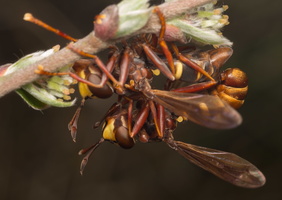- sort orderDefault
Photo title, A → Z
Photo title, Z → A
✔ Date created, new → old
Date created, old → new
Date posted, new → old
Date posted, old → new
Visits, high → low
Random - Google Map
- map
 home / Insecta · vabzdžiai / Diptera · dvisparniai / Conopidae · lenktapilvės musės / Conops vesicularis · lenktapilvė musė
home / Insecta · vabzdžiai / Diptera · dvisparniai / Conopidae · lenktapilvės musės / Conops vesicularis · lenktapilvė musė

-
 Conops vesicularis male · lenktapilvė musė ♂
Conops vesicularis male · lenktapilvė musė ♂
-
 Conops vesicularis male · lenktapilvė musė ♂
Conops vesicularis male · lenktapilvė musė ♂
-
 Conops vesicularis mating · lenktapilvė musė
Conops vesicularis mating · lenktapilvė musė
-
 Conops vesicularis mating · lenktapilvė musė
Conops vesicularis mating · lenktapilvė musė
Conops vesicularis · lenktapilvė musė
- hornet grabber
- Große Wespendickkopffliege
- Hoornaarblaaskop
flickr.com/photos/63075200@N07/albums/72157678648196023
The species is native to Europe. Their larvae are endoparasites of bees and wasps. The adults are nectar feeders. Body length 12-14mm; with a brown and yellow, hornet-like (or perhaps nomad bee-like) appearance. The wings have a brown pattern on the leading edge. The proboscis is relatively short and does not extend far in front of the head. Females are slimmer and considerably darker than males with just a single conspicuous yellow band on an otherwise brown abdomen.
Adults fly from April to August, appearing before other Conops species. They will sit on sunlit foliage and are especially keen of visiting Hawthorn blossom, which may be an important host-interception location. Hosts include queens of the Hornet Vespa crabro, Asian Hornet (V. velutina) and bumblebees.